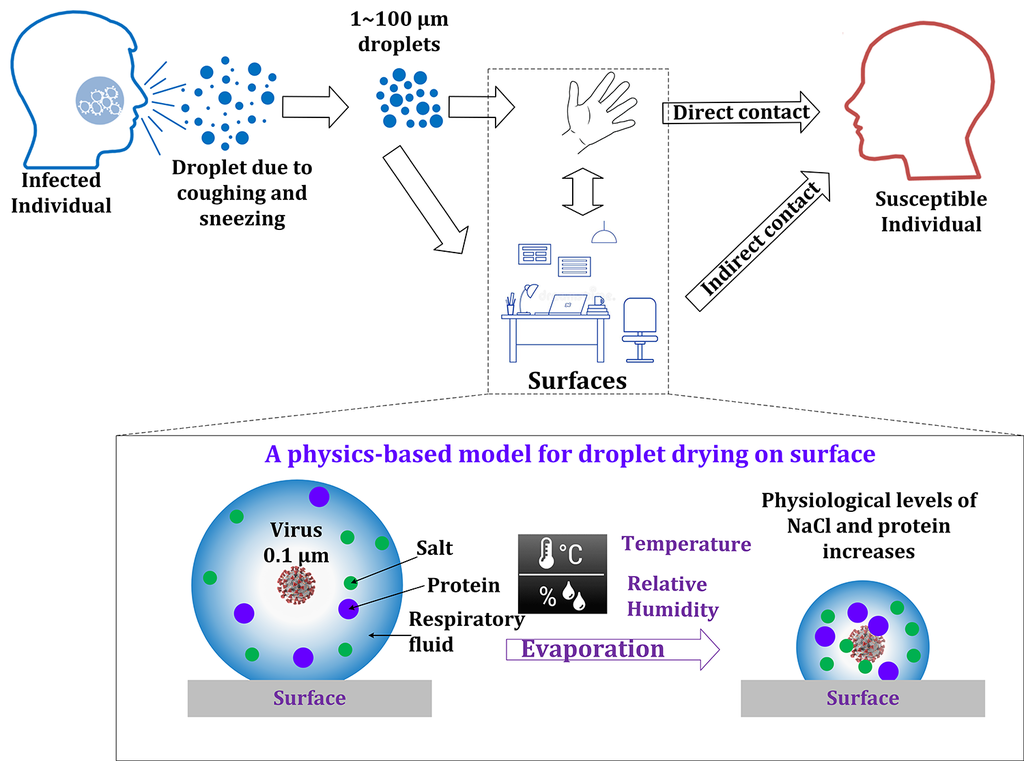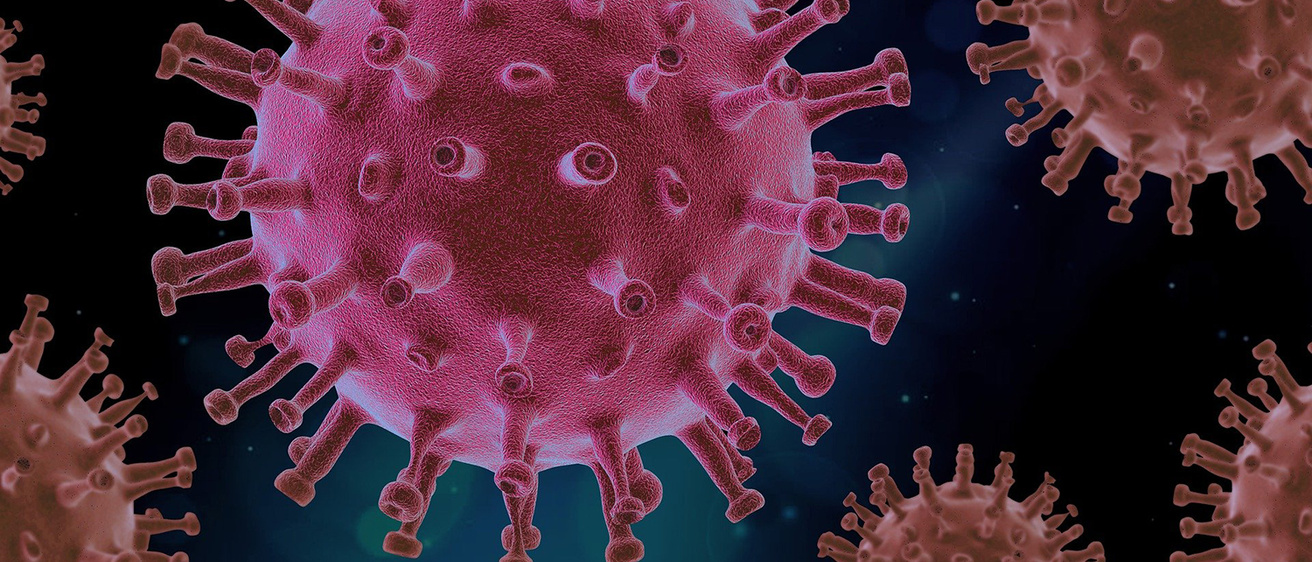The Drying Time of Droplets

Science can take you in surprising directions. Even when the results are not what you expected, they can often be useful, says IIHR Research Engineer H.S. Udaykumar.
“People always think science works on the basis of certainty, but actually, science works at the edge of certainty,” he says. Udaykumar (known to all as “Uday”), a professor of mechanical engineering, is part of a team conducting COVID-19 research to study how long viruses can survive in droplets that land on different surfaces. An NSF RAPID grant supports the research, which also includes Hongtao Ding, associate professor of mechanical engineering, and two postdocs, Avik Samanta and Pradeep Seshadri.
Initially, Uday says, it was widely thought that the virus was spread primarily through touch. When a sick person coughs or sneezes, they emit droplets containing the virus. Uday and Ding hoped to learn more about how long the virus could live in these droplets, and what effect conditions such as temperature and humidity have on virus survival in droplets.
Ding has long studied how different surface textures can encourage droplets to either stick or slide off — a field of fluid mechanics called superhydrophobicity. Uday had also extensively investigated the fluid mechanics of droplets. When COVID broke, they decided to write a proposal to study the effect of surface textures on the drying time of droplets.
Uday explains that viruses are sensitive to salt concentrations. When droplets dry quickly, the salt concentration intensifies and kills the virus. How quickly a droplet dries depends on the surface conditions and the ambient conditions. Uday wanted to use modeling to learn if it was possible to optimize surface textures so droplets would dry very quickly.
The science of COVID is evolving rapidly. It turns out that this virus is not primarily spread through touch. Rather, it spreads most often in aerosol form, in droplets “too small to see and too small to land,” Uday says.

Once researchers understood this, the science shifted. It became apparent to Uday and his team that they weren’t studying the primary cause of COVID-19 spread. “However, it’s not a waste because there are lots of other viruses spread by touch,
including influenza.” Creating surfaces that allow droplets to dry quickly and kill viruses is still important, and they continue to work on it.
“The study itself is very interesting in and of itself, and very useful,” Uday says. “It’s not as relevant to COVID-19 as we initially thought. This is the way science works.”
He’s not discouraged or disappointed. “You know,” Uday says, “sometimes the surprises make it fun.”
